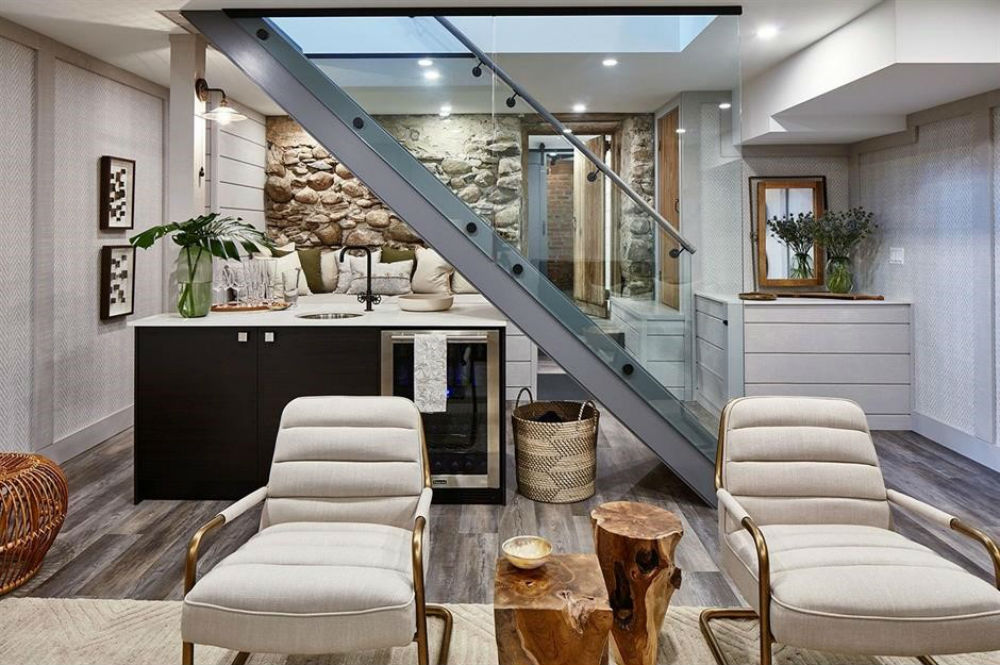Sign up to our newsletter!
No matter if you are moving, or improving, our newsletter is packed with the best tips, tricks and ideas to help you dwell well.
‘Improve, don’t move’ is an increasingly popular mantra among homeowners who are desperate for more space. With the recent increase in stamp duty, rising property prices and the high cost of moving, it’s a good idea to max out the potential of your property as a financially sensible alternative to buying a new home.
However, if you own your home on a leasehold basis, building an extension is much more difficult than for a freehold owner. As one property expert explains: “Flats and maisonettes don’t fall within ‘permitted development rights’, so you will have to apply for planning permission for any changes you wish to make to your home.” Conservation areas and listed buildings will need additional permissions. You will also need the freeholder’s consent.
If you own a ground floor maisonette or garden flat that could be hugely improved with a bit of building work, the risks and unknowns can cause stress and worry, not to mention additional expense. But rather than give up on your home improvement plans altogether, read on for advice on how to approach building an extension to your leasehold flat.

The first thing you need to look at is the basis on which you own your flat. As a leaseholder, your rights and responsibilities are set out in the lease. Read it carefully and check if there is a clause stating that you must get freeholder consent before you can carry out any internal works or propose building extensions. Here’s an example of what you might find:
“not to make any structural alterations of structural additions to the property or any part thereof without the previous consent in writing of the lessor.” (Understanding Your Lease)
Ask a planning consultant or property solicitor to scrutinise the often old-fashioned legalese in which many leases are written, if you’re not sure what it means.
The lease and associated plans will also tell you whether the demised premises - the space occupied under a lease contract - includes the garden that comes with your flat, or whether you simply have permission to use it. Some leases prohibit any construction taking place in the garden - even sheds or conservatories - so do check carefully.
Assuming that you are legally allowed to build a ground floor flat extension in principle, it’s a good idea to know exactly what your requirements for the new space are. Are you looking for an extra bedroom? Do you want to open up the kitchen into a living/dining area overlooking the garden? Or do you simply want more space?
Play around with the additional space you think you need and think of the best configuration for the new layout to suit your needs. Think about incorporating existing building features, and don’t forget to allow for plenty of natural daylight through glazed doors or skylights to enhance the space.
Work with an architect or building designer who understands the complexities of the design process and local planning policy to come up with a suitable design that ticks all the boxes.
Once you have firmed up on your plans for a building extension to your ground floor flat, you should send your plans to the building’s freeholder for inspection. As part of the planning process, the landlord will have to give his permission to your proposals, and tactically it’s better to let them know of your plans early in the process. That way, if they have any objections or request amendments, this can be dealt with before you submit a formal planning application.
Your application is highly likely to be unsuccessful if the freeholder withholds consent. It is therefore in your interest to ensure a good rapport with your landlord to ensure that he does not formally object to your plans to extend the ground floor flat.
The same approach should be used with other leasehold owners in the building. Inform them of your building plans at an early stage and iron out any concerns they may have, so that no-one has any reason to object to your planning application. Bear in mind that, depending on the exact size and type of your building works, you may also need their cooperation for a party wall agreement.
Whether or not you are using professional help, it is always wise to develop a good working relationship with your local planning officer and to understand the main considerations used to assess your application. These include the impact of the design on neighbouring property, particularly in terms of loss of light, and the correct use of external materials or the area in which you live.
If you are using an architect, they will be best placed to guide you through the planning process. Their building design expertise and knowledge of local planning policy will ensure the greatest chance of success for your planning application for a ground floor flat extension.
Live well with Moving and Improving